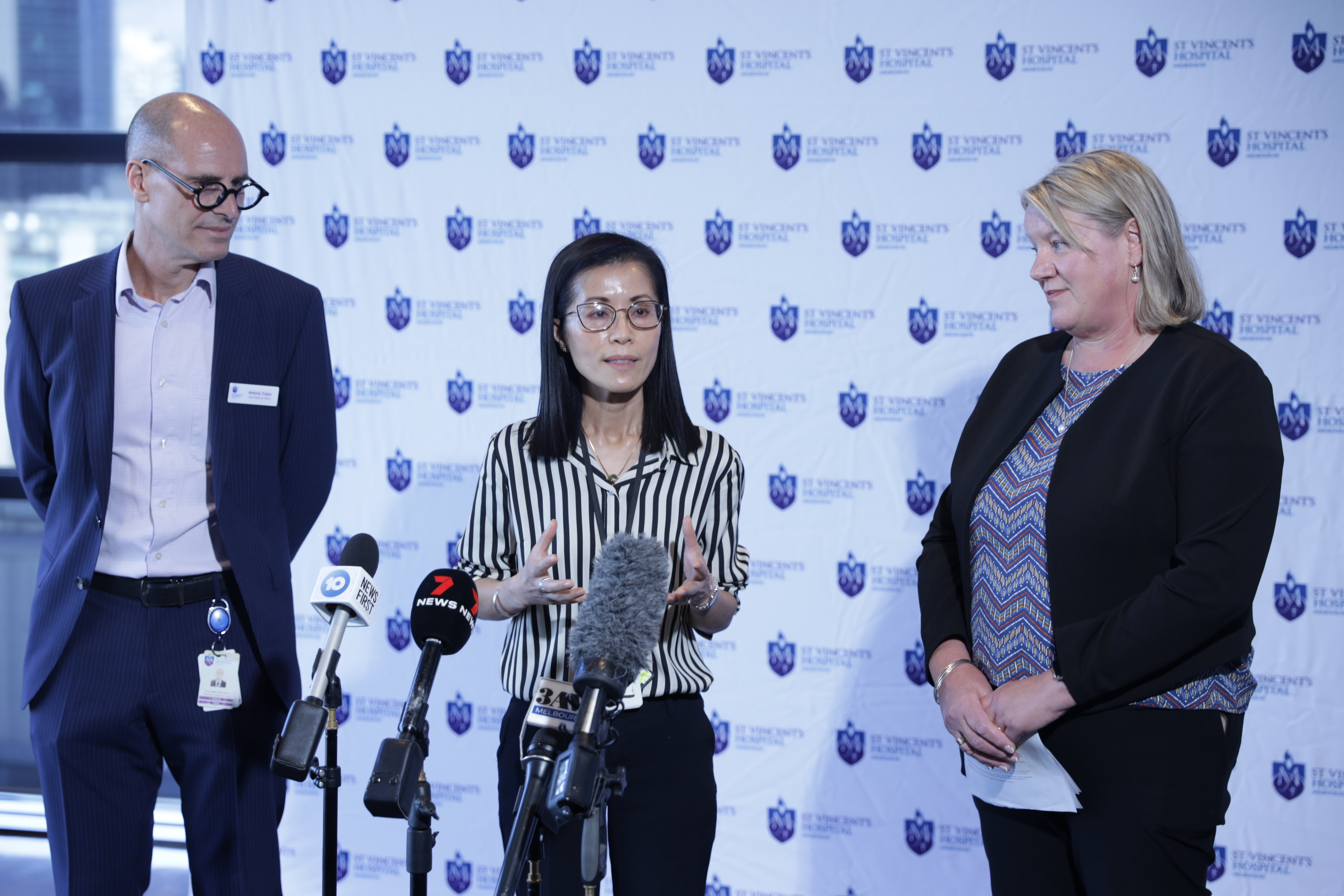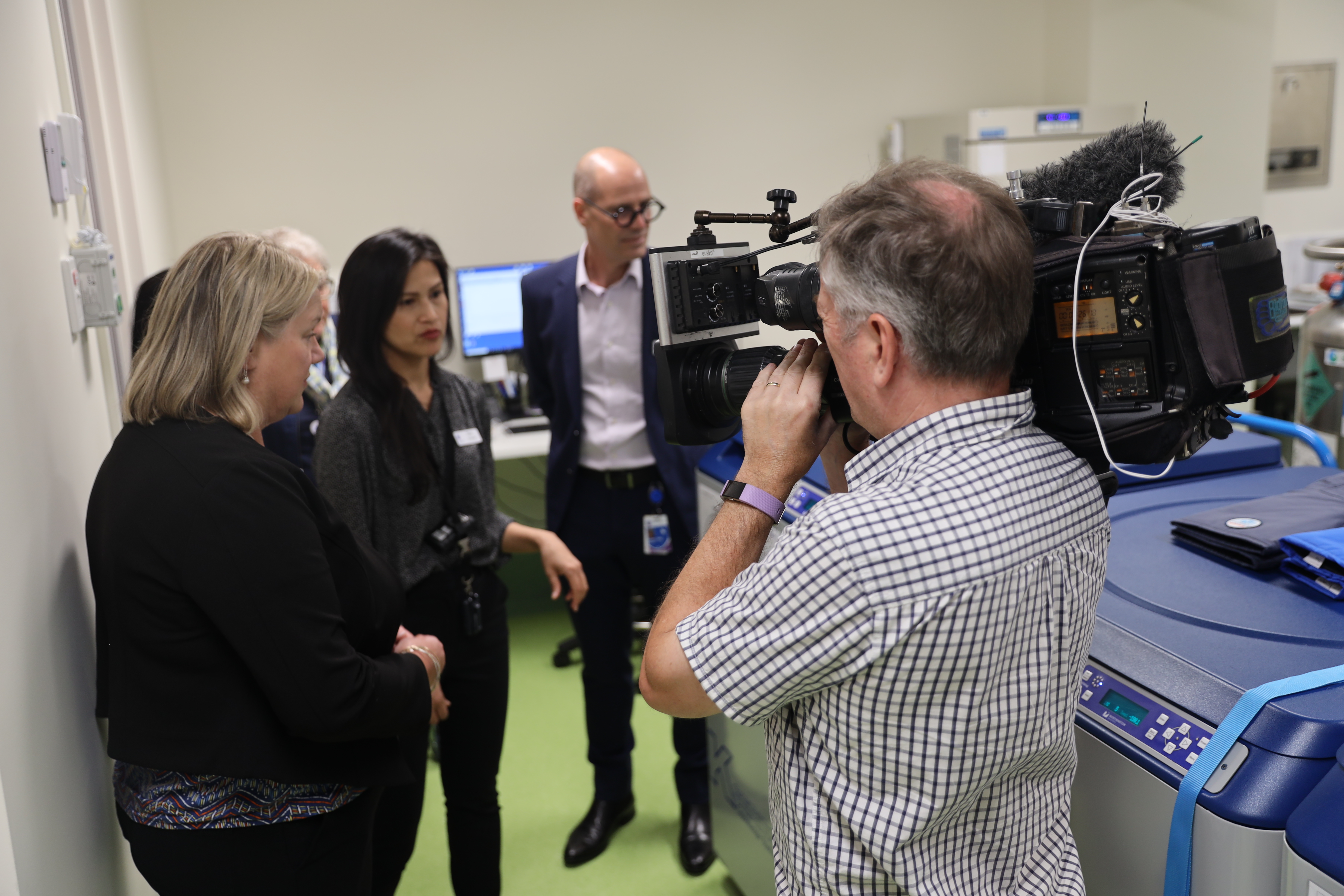St Vincent’s Hospital Melbourne’s new cellular lab boosts Victorian blood cancer research

Pictured: St Vincent's Chief Medical Officer Antony Tobin, Clinical Haematology Director Hang Quach, and Acting Minister for Health Ingrid Stitt.
A new cellular laboratory at St Vincent’s Hospital Melbourne (SVHM) is now operational and supporting the growth of haematology clinical trials.
Through the three phases of clinical trials – testing the safety, effectiveness and optimisation of treatments – SVHM strives to find new treatments for blood cancer that may work better than those currently available as standard of care in Australia.
While haematology at SVHM covers all blood disorders, cancer remains a major focus due to its severity and the absence of a cure in many cases.
Victoria’s Acting Minister for Health, Ingrid Stitt, visited the new lab and met with Associate Professor Merrole Cole-Sinclair, Director of Laboratory Haematology,Tina Pham, a medical scientist who works in the facility, and Professor Hang Quach Director of Clinical Haematology, who spoke about some of the ground-breaking work taking place.
“Victoria has long been a world leader in clinical trials targeting life-threatening cancers – this new lab will play a pivotal role in supporting the discovery of treatments, giving hope of a cure to those living with these diseases,” said Minister Stitt.
“Clinical trials are the greatest chance our doctors have in finding a cure for blood cancer – the remarkable work undertaken by Professor Quach and her team is going to go a long way to changing and saving lives.”
A new era for blood cancer treatment
With more than 130 haematology clinical trials underway across the hospital, the new lab expands on SVHM’s existing laboratory space, and provides a dedicated area for trials involving CAR-T cells – making this innovative treatment available to more Victorians.
CAR-T cells are a patient’s own T cells that have been manipulated outside their body, with the insertion of a gene that allows the T cell to grow a manmade arm to grab onto the cancer cells.
T cell engagers have two arms – one binds to cancer cells and the other binds to the T cells and forces them into close proximity to the cancer cells, enabling the T cells to kill the malignant cells.
Professor Quach said that providing access to CAR-T cell and T cell engagers for treatment is currently one of the most pressing needs in healthcare.
“CAR-T cell treatments can provide the possibility of a cure to some lymphoma and acute leukaemia patients, and can be a long-term control for myeloma,” Prof Quach explained.
“I’m very proud of the role SVHM is playing in trying to meet this need – there are currently three CAR-T cell studies underway at our hospital, with three more starting in early 2024, as well as 17 studies underway using T cell engagers, and eight more starting during the next two months.”

Pictured: Acting Minister Ingrid Stitt on a tour of the new cellular laboratory.
Innovative and equitable care
For patients who have exhausted standard treatment pathways, clinical trials can be a life-saving option.
“The ongoing discovery of new agents can help our quest to provide personalised treatment for each patient’s specific disease and, ultimately, get closer to a cure,” said Professor Quach.
“Most haematological cancers are still incurable, so we need to continue undertaking innovative, ground-breaking studies, improve standard of care and ensure equitable access to treatment via clinical trials to all Australians, regardless of where they live – and having the new infrastructure at SVHM will help us keep getting closer to achieving this.”
Read more about haematology clinical trials at SVHM here: https://www.svhm.org.au/health-professionals/specialist-clinics/h/haematology